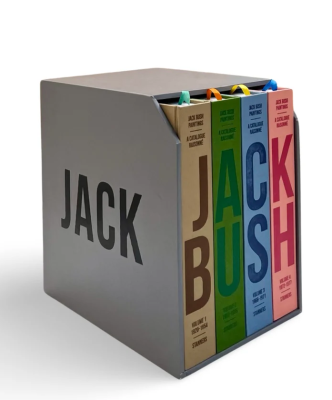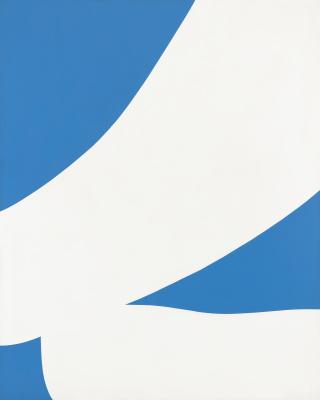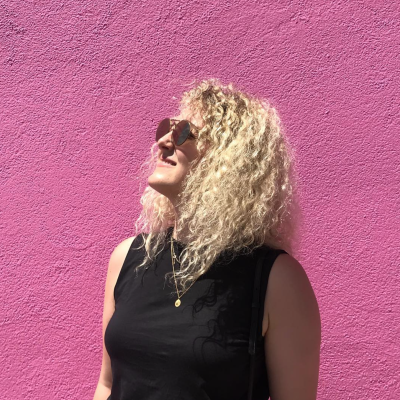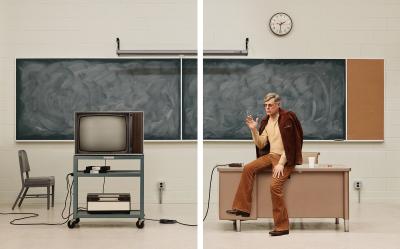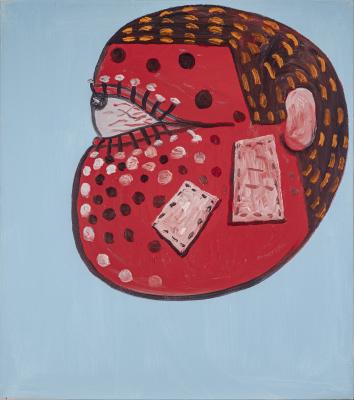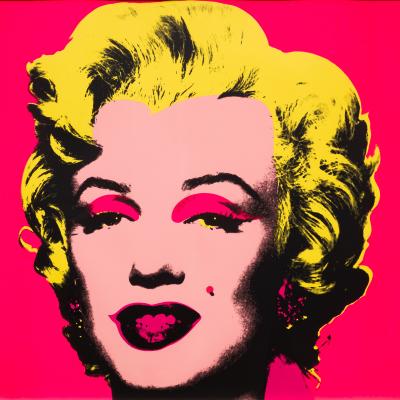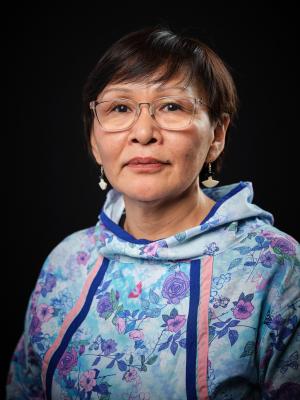Three Generations of Artists with Goota Ashoona
The renowned Inuk sculptor reflects on her mother’s work, currently on view in Surusilutu Ashoona
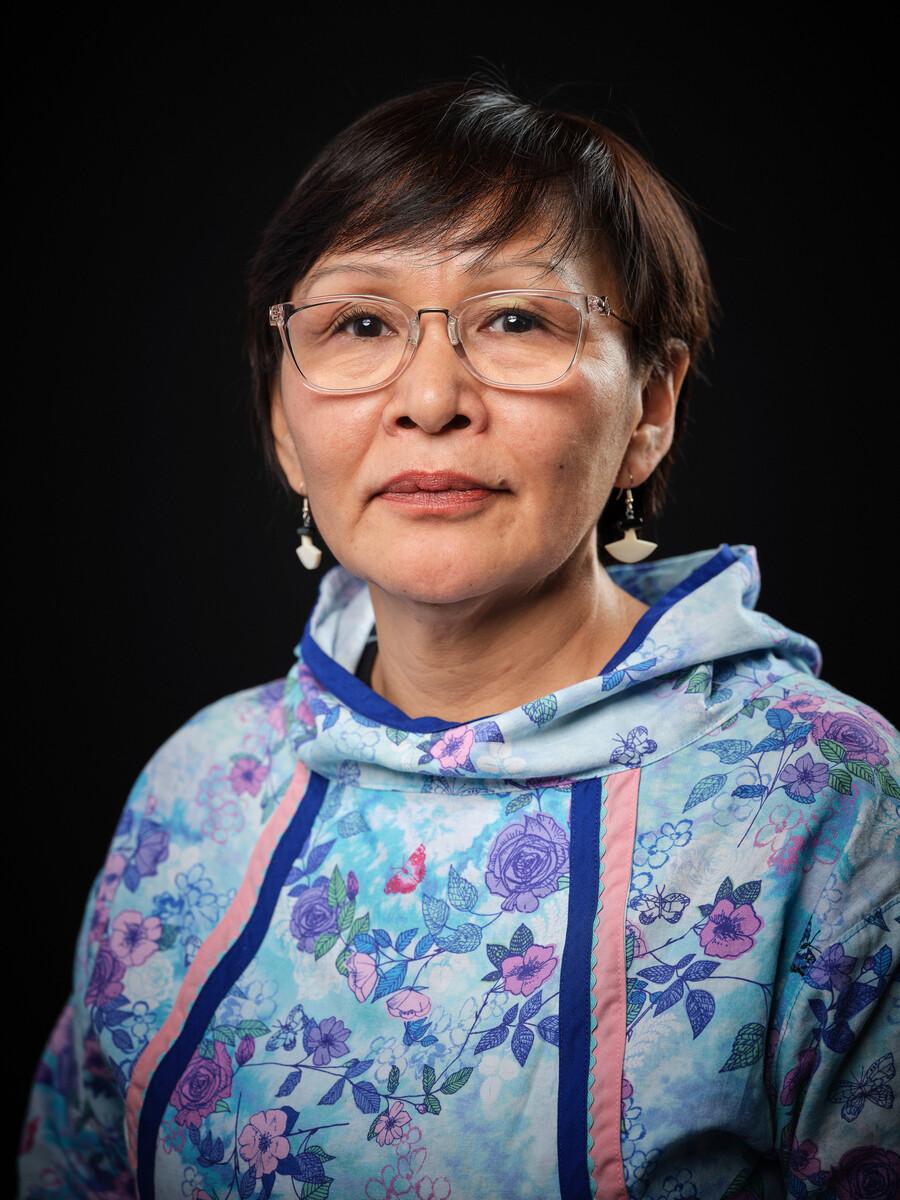
Goota Ashoona, 2025. Photo: Craig Boyko © AGO
The Ashoona family represents three generations of Inuit art. Goota Ashoona embodies that legacy. She is the granddaughter of trailblazing Inuk artist Pitseolak Ashoona, daughter of the acclaimed Surusilutu and Kiugak Ashoona, and the sister of Shuvinai Ashoona – whose exhibition Beyond the Visible was on view at the AGO in 2021. For Goota, her journey as an artist begins with her mother. She carries vivid childhood memories of the colours, shades and forms of Surusilutu’s pencil drawings, created in her home. It wasn’t until a recent visit to the AGO that she was able to see her mother’s work installed as a solo exhibition for the first time ever.
On view now until December 10, 2025 at the AGO, Surusilutu Ashoona features 17 works from the foundational Inuk artist. Pulled from the AGO’s Inuit Art Collection, the exhibition comprises both prints and drawings, illustrating scenes from a realm in which Ashoona conjures a mix of human/animal hybrid beings, traditional Inuit iconography, and everyday life in Kinngait, Nunavut. One pencil drawing from the exhibition, Four Transformation Images (1961), transports Goota back to her childhood. For her, it signifies the early days of her mother’s art practice and some of the first inspiration for her own work.
Goota is an acclaimed sculptor who has been exhibiting works across Canada for over three decades. Her massive marble sculpture of the Inuit water deity Sedna, Tuniigusiia (The Gift) (2020), is widely considered the largest Inuit sculpture in the world and is currently on view outside the Winnipeg Art Gallery. Goota recently travelled to Toronto from her home in Winnipeg, to view the Surusilutu Ashoona exhibition for the first time. She spoke to Foyer about her mother’s work, childhood memories and the enduring legacy of the Ashoona family.
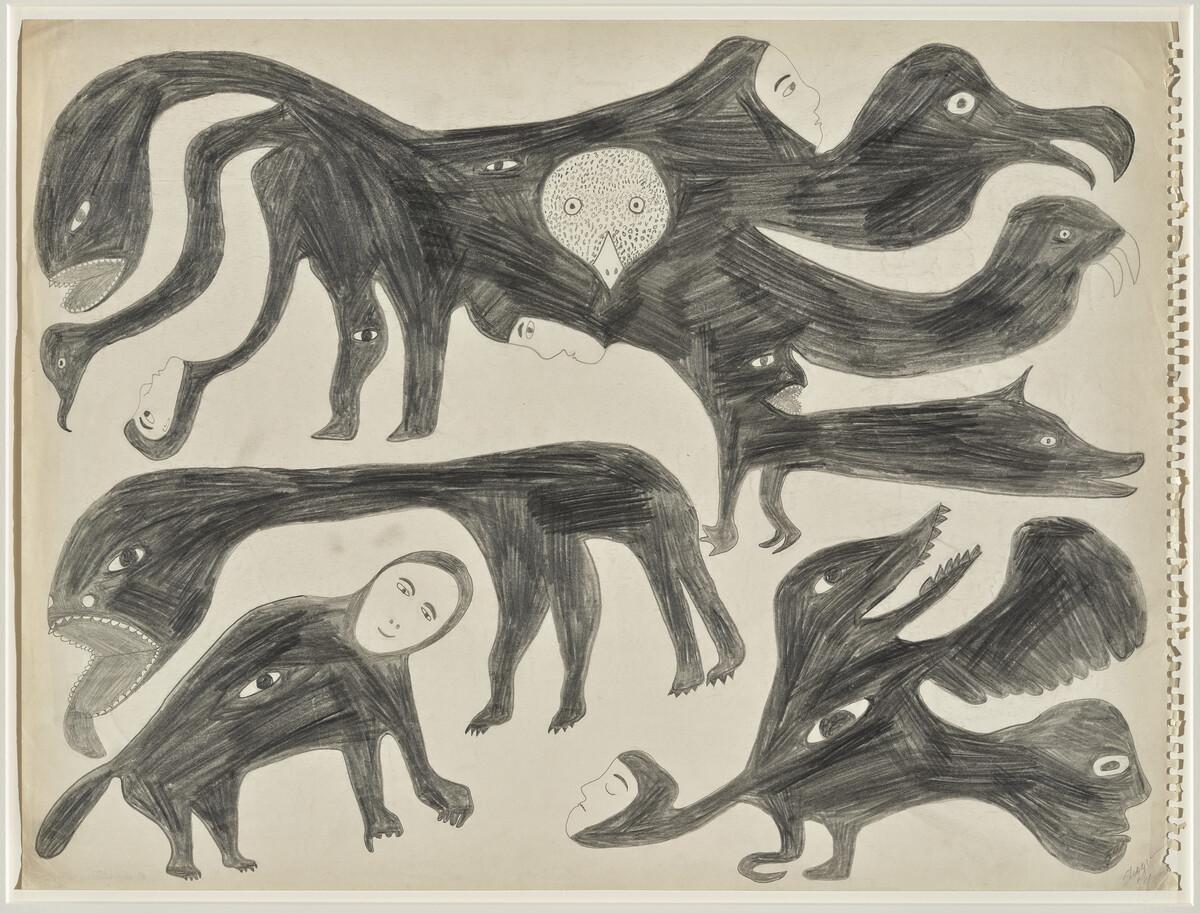
Surusilutu Ashoona. Four Transformation Images, 1961. Graphite, Overall: 46.5 × 61.5 cm. Art Gallery of Ontario. Gift of Samuel and Esther Sarick, Toronto, 2002. © Estate of Surusilutu Ashoona. Reproduced with the permission of Dorset Fine Arts. Photo: AGO. 2002/10684
Foyer: What were some of your thoughts while engaging with your mother’s work in her first-ever AGO solo exhibition? Were there any works that really resonated with you?
Goota: Coming to the AGO to see my mother’s artwork was spectacular. It really touched my heart. This is the first exhibition of her work that I’ve seen at a major gallery. It makes me happy to know she is being recognized in this way; to know that her work is being seen and documented and that people will know her story.
I arrived at the AGO with the great granddaughter of my mother, Tanya, who I just met for the first time. She looks so much like my mother, and viewing the exhibition with her made it feel like my mother’s spirit was present in the room.
My mother’s early pencil works like Four Transformation Images (1961) were special for me to see. It was my first time seeing them and they reminded me of my mother’s early works, from when she first began her practice.
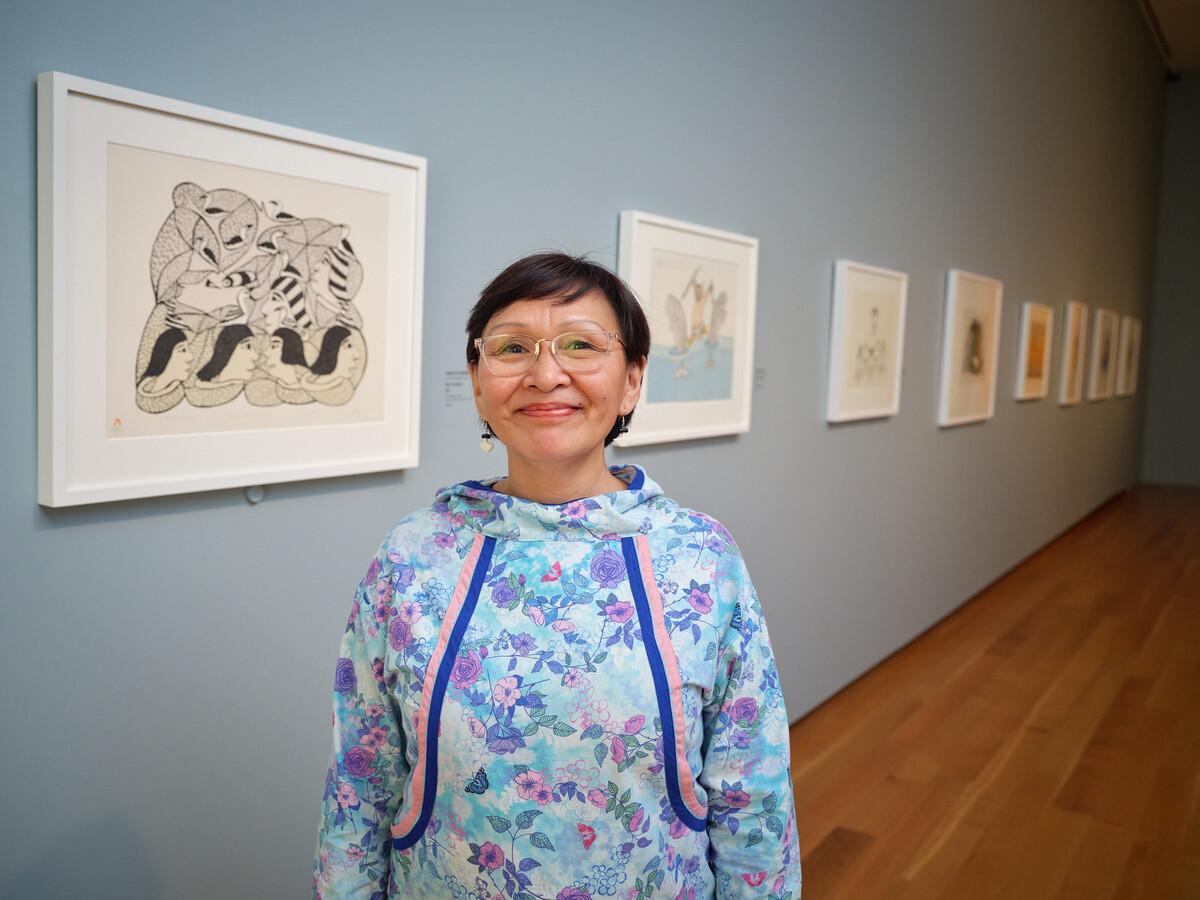
Goota Ashoona, 2025. Photo: Craig Boyko © AGO
As you looked through the exhibition, were there any specific childhood memories that came to mind for you, from the years Surusilutu made these works?
Seeing these artworks hanging together brings me back to my childhood home. I remember waking up in the morning, as my mother would begin working on a drawing. She would spend the day tending to our home – taking care of the kids, grocery shopping, cooking, cleaning – while also going back and forth to her drawing, slowly finishing it. Then by the end of the day, the drawing would be complete.
My mother was a hard-working woman. She was very unselfish and nurturing. When my father’s carving practice picked up, she slowed her own drawing practice down to help him. She filed, finished and sanded many of his works and she was truly instrumental in him becoming the artist that he was.
Her work also reminds me of our way of life. For her and my father, art making was intertwined with the normal responsibilities of the day. My father would be hunting or fishing, while my mother would be tending to the children and preparing food, then they would find time to make art in between.
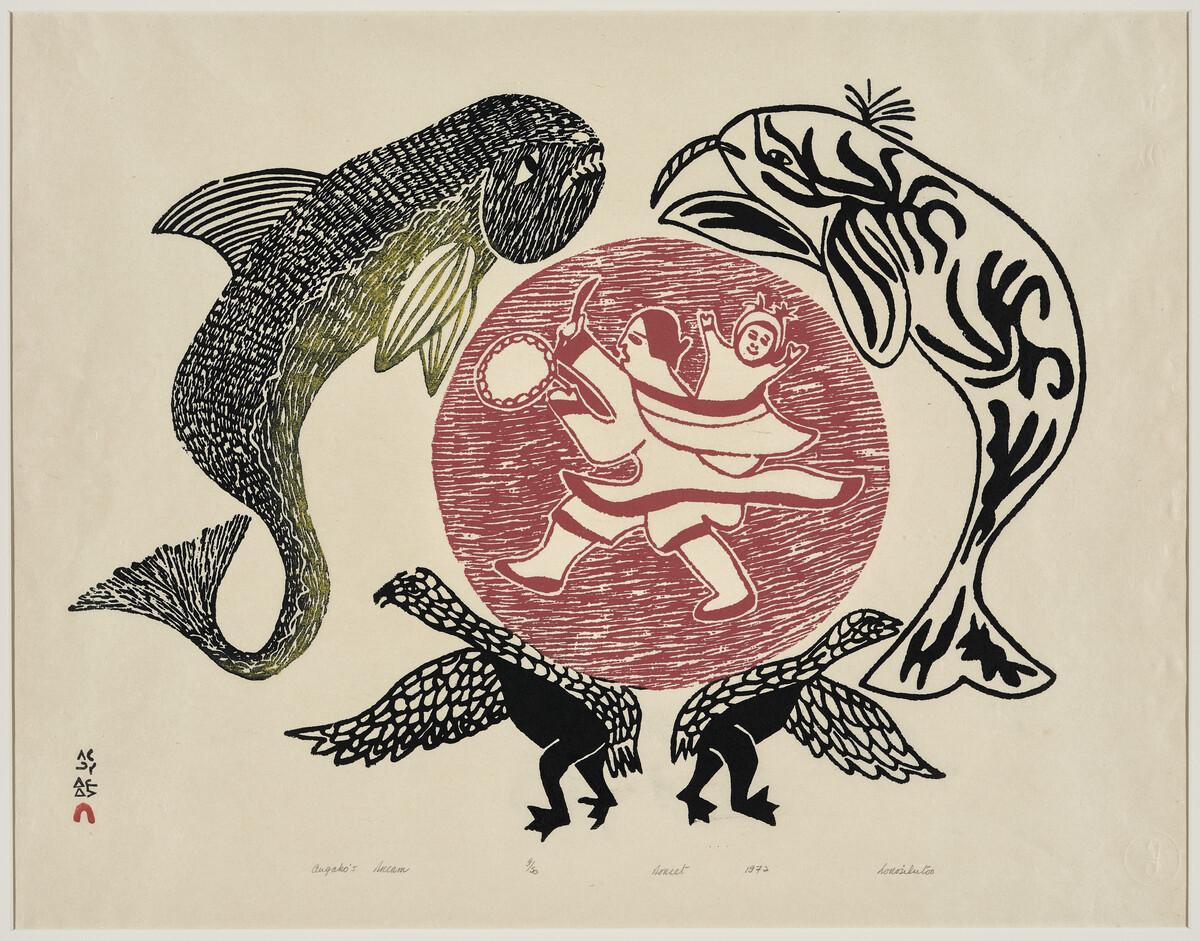
Surusilutu Ashoona. Angako's Dream, 1972. Colour stonecut, Overall: 48.7 × 62 cm. Art Gallery of Ontario. Gift from the Dr. Michael Braudo Collection, 1993. © Estate of Surusilutu Ashoona. Reproduced with the permission of Dorset Fine Arts. Photo: AGO. 92/160
You have an extensive sculptural practice and have exhibited work internationally and been honoured for your contributions many times. Can you share a couple of your most cherished career highlights with us?
I’m grateful and lucky to have become an artist. I grew up watching my mother and grandmother draw, my father carve, and my aunt throat singing. I’m proud to have become one of the Inuit artists that people know about, who can carry on the Inuit art tradition.
There are many memories and highlights to reflect on. A major one for me is making my large stone carving, Tuniigusiia (The Gift), which is currently installed outside the Winnipeg Art Gallery. Part of the reason it’s so special is that the original inspiration to make the work came from my mother. She and my father came to visit me in Yellowknife, and during a conversation, it was mentioned that an Inuit artist should make a large stone carving. At that moment, she turned to me and said, “It should be you.” It took me over a year to complete the work. The sculpture depicts Sedna [Mother of the sea in Inuit mythology], and it references all the artists that came before me in my family – my father, mother, aunt and grandmother.
You represent multiple generations of ground-breaking Inuit artists: your grandmother, your parents, yourself and your sister. At this stage in your artistic career, how are you reflecting on your family legacy? What are your hopes for future generations of artists in your family?
I remember when I was a child, I thought that because we hunted for our food and lived off the land that we were poor. But now I look back and realize that we were rich. I reflect on the art tradition of my family in the same way; it is rich. I watched how my parents lived, and understood what they believed in, and now it’s amazing to see them represented here at the AGO.
I hope that my mother’s artwork will continue to open doors for my family in the future. She passed her gifts on to my sister Shuvinai and myself. She showed us the way. Now I see how much my sister has advanced in her art career, and I’m very proud of her. I’m also proud of my own achievements.
I have high hopes for the next generations of my family. Two of my grandchildren have already shown an interest in the arts, which makes me very happy. My 15-year-old grandson is involved in making music, and my other 10-year-old grandson likes to draw. I hope the strong artistic tradition of my family carries on through them. And to the next generation of artists in general, I’d like to say: If you’re going to be an artist, stick with it. Don’t give up and keep moving forward.
Surusilutu Ashoona is on view now until December 10, 2025 in the R. Samuel McLaughlin Gallery (gallery 201)on Level 2 of the AGO.
